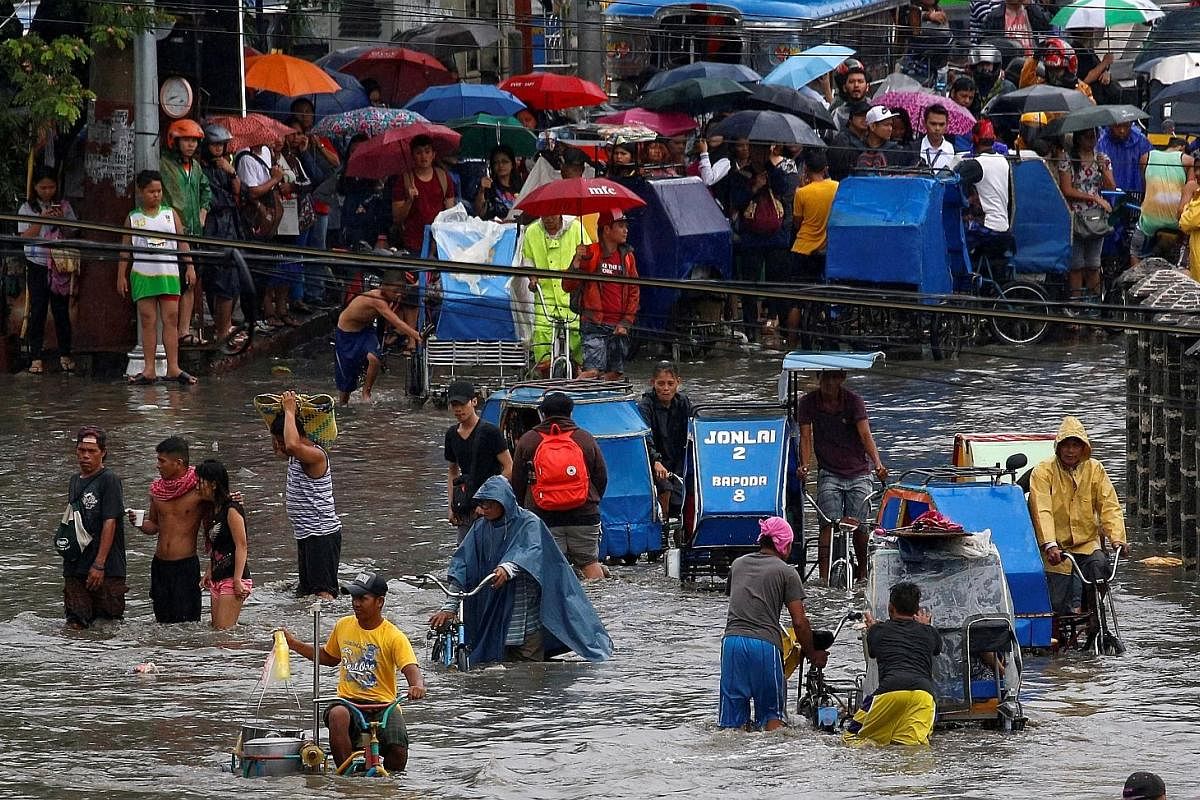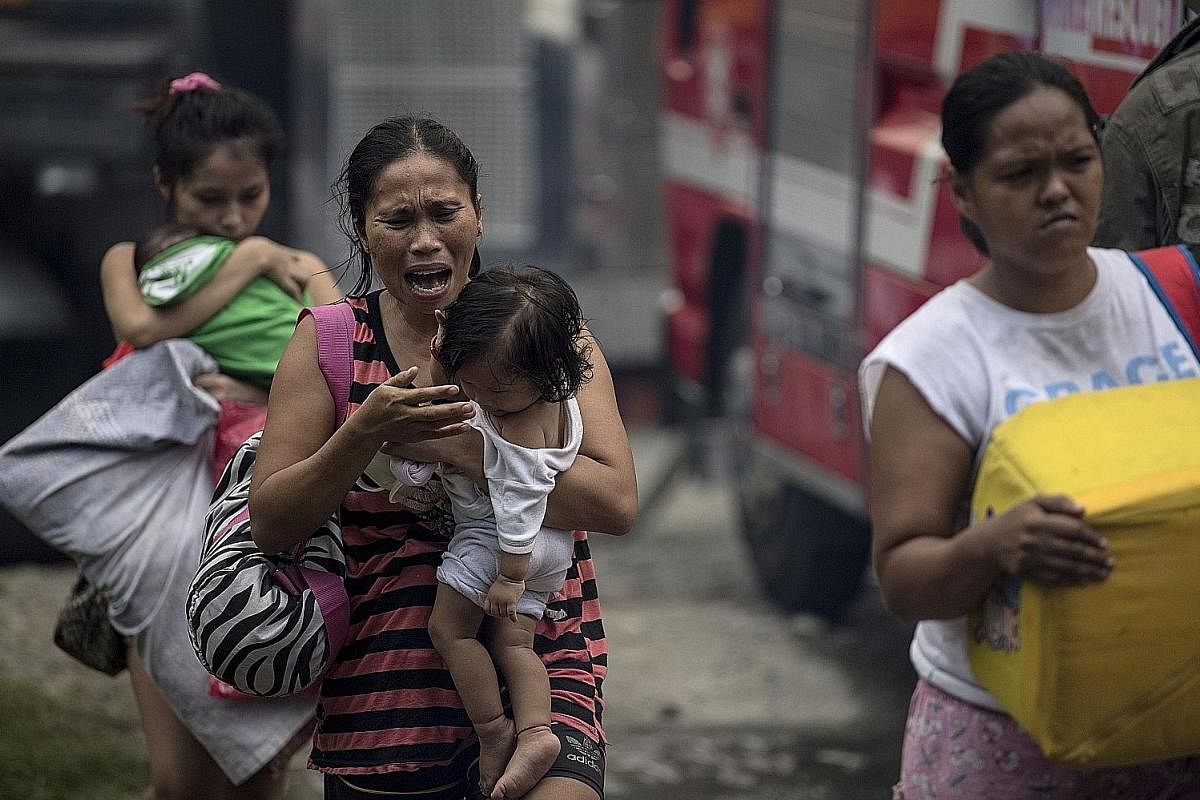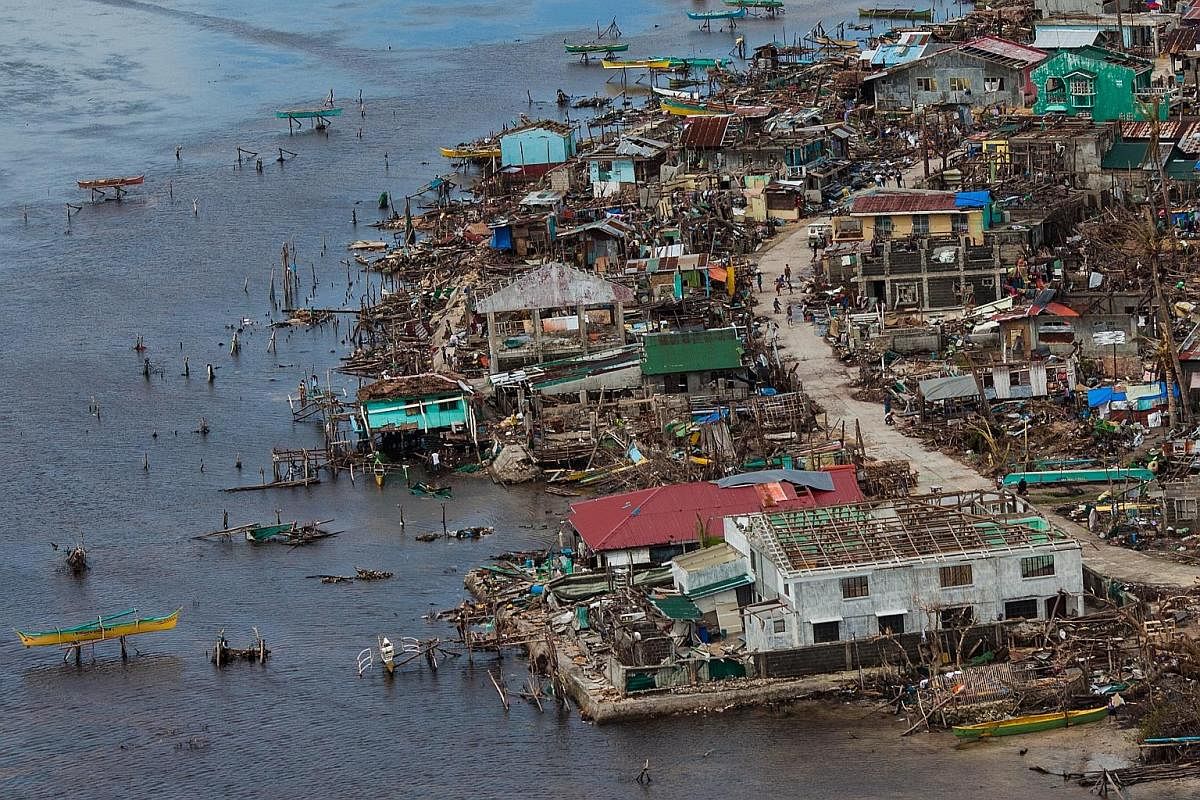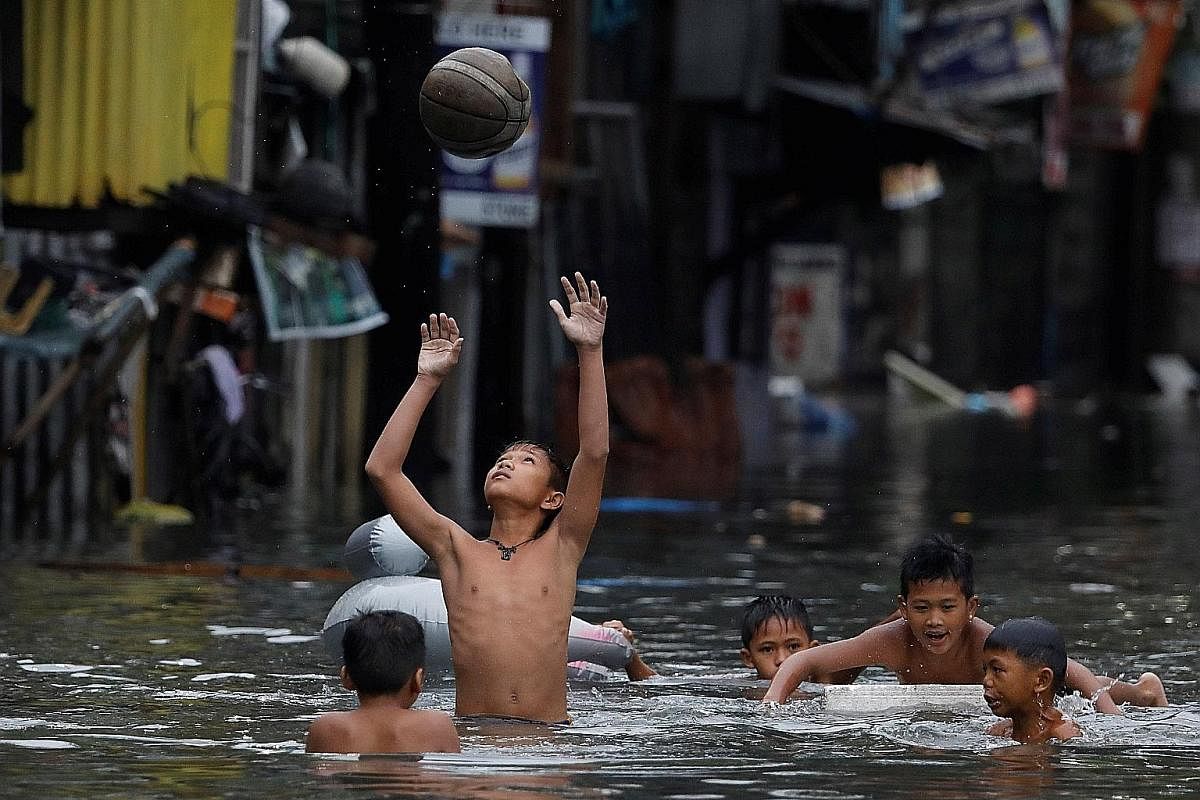Field notes
Taking disasters in their stride
Every natural disaster hurts, but Filipinos have made much headway in mastering the art of bouncing back - and the world ought to learn from it





For half the year starting in May, storm clouds loom and raindrops fall in the Philippines.
Usually, an umbrella or a raincoat is sufficient protection. But typhoons and tropical storms often come barrelling in from the Pacific, bringing gale-force winds and causing waist-deep floods. Cities grind to a halt, hundreds of thousands are displaced from their homes, and entire crops are destroyed.
The nation of more than 100 million people has already seen 16 typhoons and tropical storms this year. And the forecast for the rest of the year is no more pleasant. The weather bureau is expecting nine more tropical depressions - which may develop into storms and then typhoons.
Since the middle of last month, a string of storms has been hitting the country like pearls on a necklace - Maring, Talim, Nando and Khanun have taken turns to leave their mark on the Philippines, flooding the capital Manila and many parts of the archipelago. There has rarely been a rain-free day since.
But none of this will spoil Christmas for Filipinos, who start preparing for the festival from September. The malls are packed even during heavy storms.
As rain lashes down and heavy winds blow off riverside shanty homes, Filipinos carry on as usual.

Can't bounce a basketball in a flood? Boys play volleyball instead. Some even continue to walk their dogs in ankle-deep flood water.
And for some, the bad weather is a boon. Mr Severino Bulas, 41, who drives a pedicab - a bicycle rickshaw - makes more money when it pours. He earns thrice as much as usual when the streets are flooded.
He said of a storm: "I go out and see if I can make money. It's not the end of the world."
GRIT AND OPTIMISM
The Filipino blend of gritty stoicism and natural optimism in the face of extreme weather conditions comes from living in the world's fourth most disaster-prone country, after the United States, China and India.
The Philippines is hit by about 20 typhoons each year.
Some 25 active volcanoes are scattered across the smattering of islands, each one with the destructive power of a nuclear warhead. In 1991, Mount Pinatubo, which had lain dormant for centuries, erupted in what remains to this day the second-largest volcanic eruption this century. Nearly 20 million tonnes of sulphur dioxide was injected into the stratosphere, causing global temperatures to drop temporarily by about 0.5 deg C.

Earthquakes are also a regular occurrence, with the seismology bureau posting "earthquake incidents" almost daily on Twitter. While most cause just a slight, swift shaking of the ground, a few each year topple buildings and wreck lives. Over 2,400 people died when a 7.7-magnitude earthquake hit the resort city of Baguio in 1991.
Geologists warn that it is just a matter of time before the "Big One" hits Metro Manila. If a fault line beneath the metropolis of over 10 million people moves, half the region will be devastated and the death toll is expected to top 35,000.
University of the Philippines Professor Gregg Lloren, now on sabbatical at the University of Edinburgh as a post-graduate research fellow, noted that Filipinos are used to coping with natural disasters.
Their experience with poverty has given them a dark sense of humour, he added. "We laugh at everything. It's a coping mechanism. Life is hard, but we do not want to be blind to what pains us. So, we just talk about them in jest," said the expert on popular culture.
LESSONS LEARNED
This is not to say Filipinos laugh in the face of danger. They know complacency can exact a heavy price and this they learnt on Nov 8, 2013.
Early that day, Typhoon Haiyan came barrelling towards Tacloban, a trading hub of 200,000 people. Its wind speed of up to 310kmh made it a super typhoon - anything above 240kmh is classified as such.

Warnings were sent out the night before, but most people decided to stay home and wait it out. This turned out to be a big mistake.
Haiyan's jet-force winds built up an immense bulge of water from a shallow bay that sent massive walls of waves ashore and drowned most of Tacloban in waters 4m deep.
Almost nothing was left standing in the city. Haiyan claimed over 6,300 lives; 2,000 in Tacloban. It was the most deadly natural disaster to have hit the Philippines.
Four years on, Tacloban is again a thriving gateway in central Philippines. But people there now run to higher ground when told to do so.
DISASTER-READY, NOT DISASTER-PROOF
It is not as if the country does not have disaster-readiness plans.
The Philippines has had such a plan as early as 1941. It came out of a "national emergency commission" to oversee war preparations in the country's cities and towns.

Over the years, the main coordinating body for natural disasters underwent several permutations, and the network beneath it spread to include not just all government agencies but also state-run corporations and civic organisations.
The latest iteration is the National Disaster Risk Reduction and Management Committee created in 2010. It is meant to reach all the way down to grassroots government units, called the "barangays", and mobilise them as first responders. The weather bureau provides early warnings. The committee mobilises all agencies in charge of emergency and relief efforts, and relays them down to the provinces, cities and towns, and barangays. The national government, cities and towns prepare shelters, and the barangays trigger the evacuations.
About 1,000 people die each year in the Philippines as a result of typhoons, and the occasional earthquake and volcanic eruption.
After Haiyan, the Philippines has poured more resources into early warning systems. It has also zeroed in on the importance of clear evacuation points, pre-positioned aid in remote communities, and public education on safer places to build houses and plant crops.
In October 2015, Typhoon Koppu made landfall in Luzon, the Philippines' biggest and most populated island, with winds at 210kmh. It crawled over vast swathes of Luzon for three days, bringing torrential rains that triggered landslides and massive flooding. The death toll, however, was kept to around 50.
The United Nations was impressed. "The communication of early warnings in the Philippines has improved significantly since Typhoon Haiyan," Ms Margareta Wahlstroem, head of the UN's office for disaster risk reduction, said in a news release.
She said the Philippines' disaster risk management "can be usefully adopted by other countries".
WHAT LIES AHEAD
It is predicted that storms will get stronger and more frequent due to climate change. The destructive power of typhoons across China, Japan, Korea and the Philippines has intensified by 50 per cent in the past 40 years due to warming seas, a new study by Professor Wei Mei, at the University of North Carolina at Chapel Hill, has found.
The Philippines is bracing itself for it. Congress is working on a law that will create a Cabinet-level department focused on disaster response. That will mean a bigger budget to mitigate the impact of typhoons, floods and other disasters, as well as more coordinated efforts to rebuild affected communities.
The government is also spending US$500 million (S$680 million) to upgrade Metro Manila's four-decade-old flood control system. It plans to build 20 new pumping stations and rehabilitate 36 existing ones over the next seven years.
For ordinary Filipinos affected by natural disasters, they have learnt to take it all in their stride.
LIFE GOES ON
Mr Diofel Llamado, 50, lost his two daughters to Haiyan. He and his wife are sharing a makeshift shelter with two other families while waiting for a church-funded permanent resettlement site to be completed.
But Mr Llamado has stopped relying on handouts. Each day, he makes hundreds of empanadas - a crescent-shaped bread stuffed with ground pork, diced potatoes and peas - to sell to restaurants and a hospital cafeteria. He takes home about 800 pesos (S$21), half of what he used to make selling the same snack before Haiyan, but it keeps his mind off what happened that dreadful day.
His daughters were buried in a mass grave as there was no embalmer when their remains were found. "My wife visits the mass grave every Friday without fail. Whether it is sunny or there is a typhoon, and even when she is sick, she would go there," he told The Straits Times.
Mr Eduardo Inteng, 32, who collects scrap metal, empty bottles, containers and newspapers for a living, is trying to go on with life as usual as well. However, the storm has left a lasting impression on his young son.
When Haiyan struck, the child, then four, was separated from his parents. Mr Inteng found him five days later, but his wife is still listed as missing today. Now eight, his son still panics whenever there's a typhoon and his father is not with him. "When there is a typhoon, I try my best to go home, or else he cannot sleep and will keep on crying the whole night," he said.
Join ST's Telegram channel and get the latest breaking news delivered to you.
A version of this article appeared in the print edition of The Straits Times on October 21, 2017, with the headline Taking disasters in their stride. Subscribe
